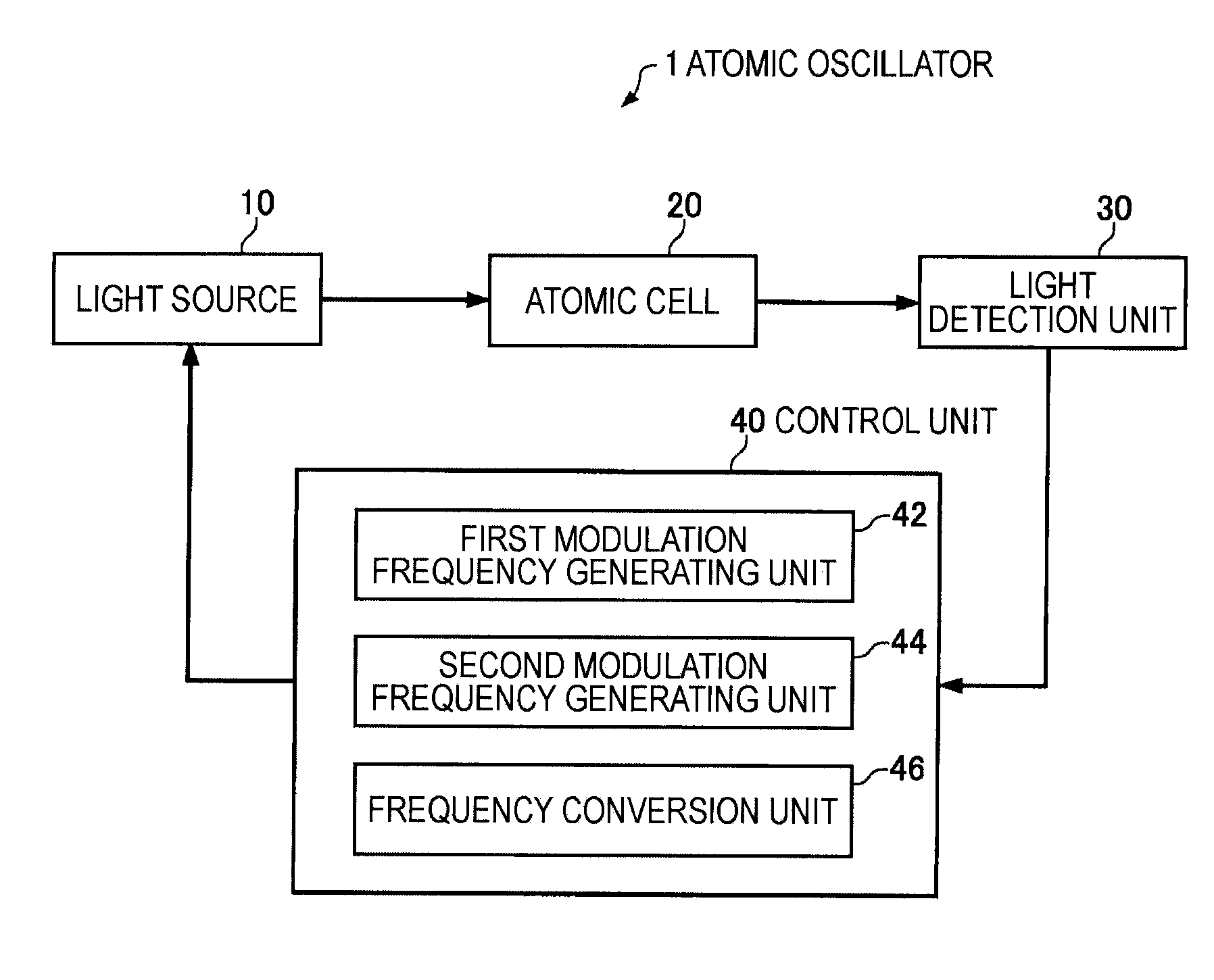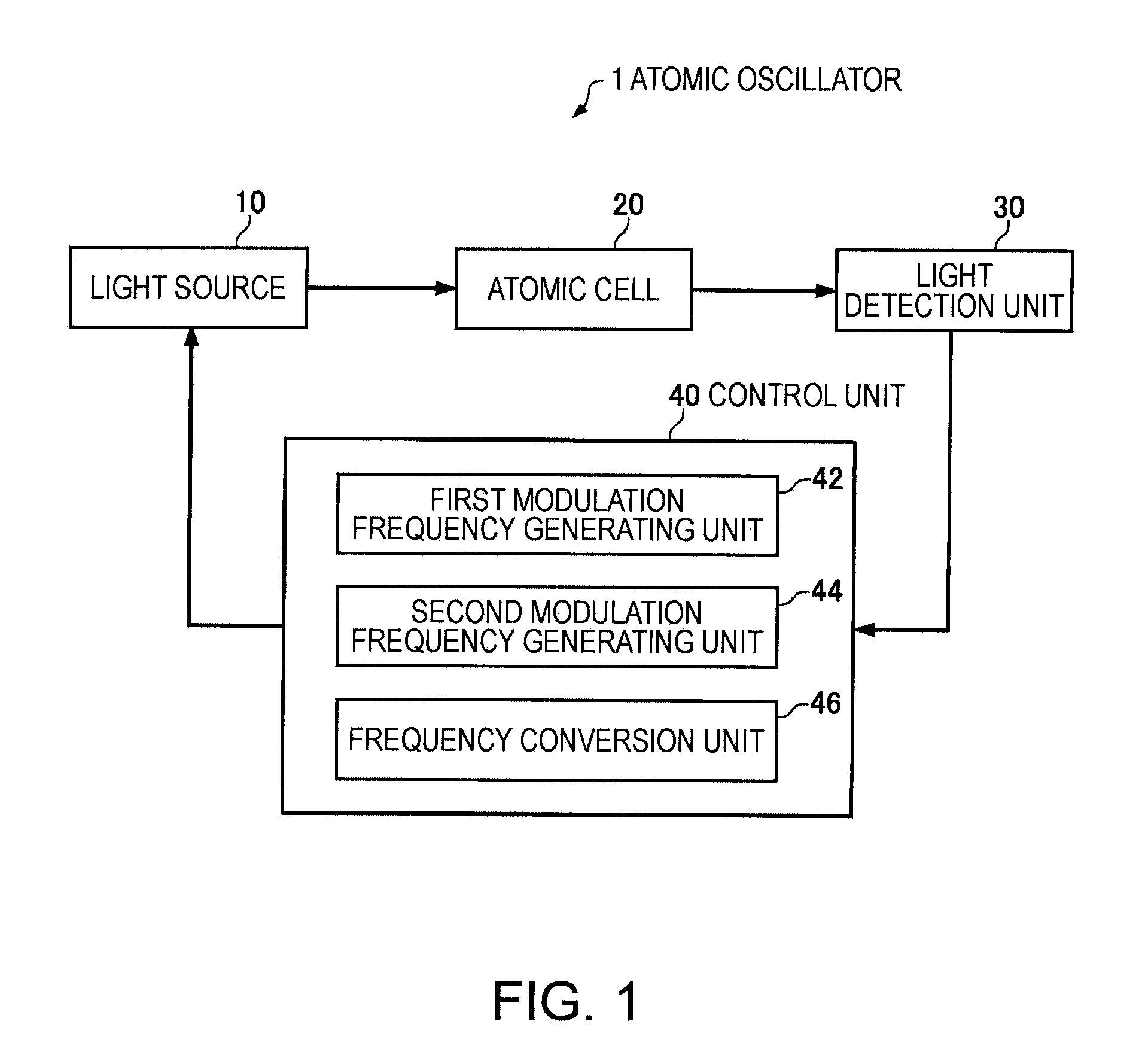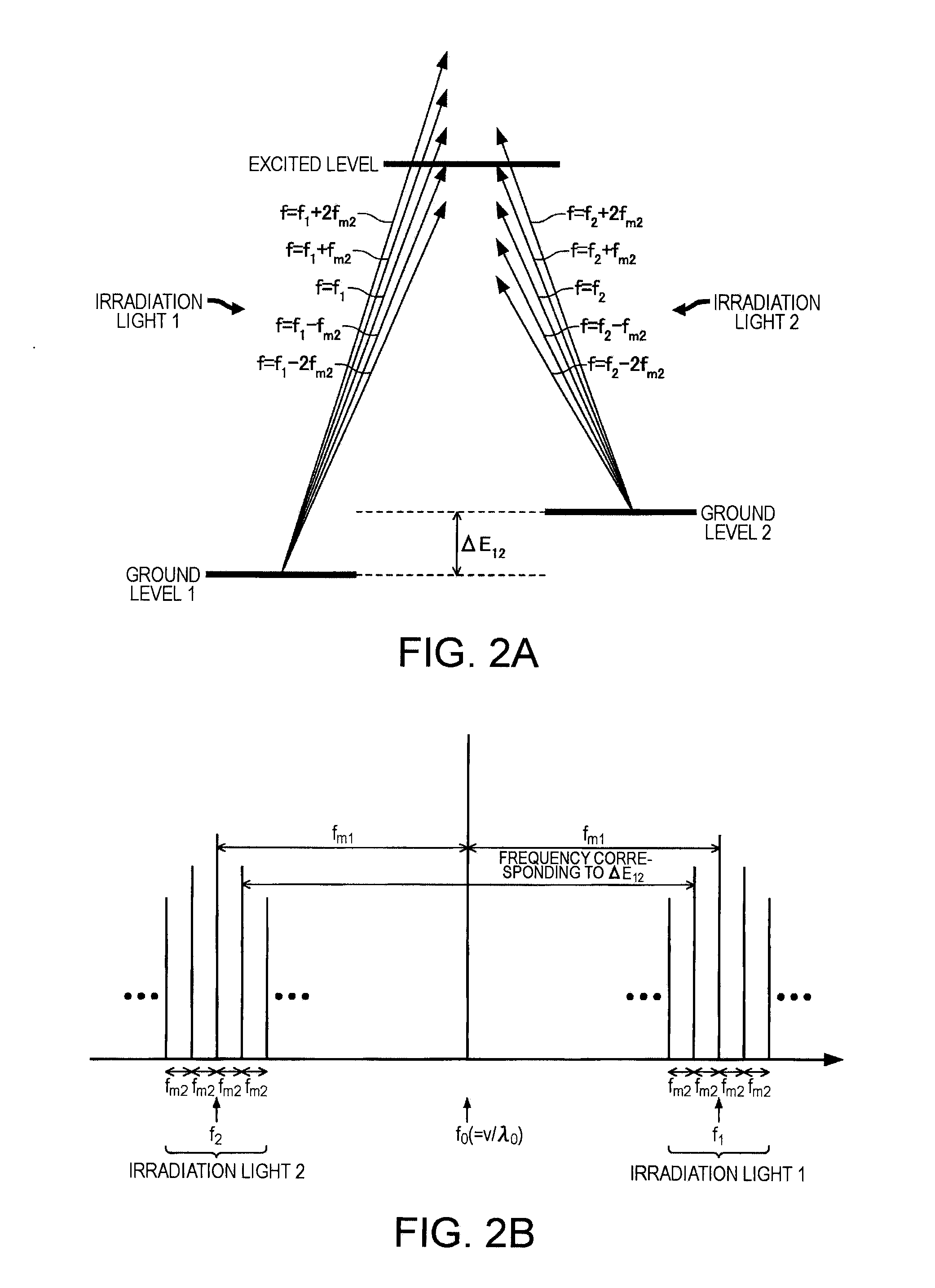Atomic oscillator
- Summary
- Abstract
- Description
- Claims
- Application Information
AI Technical Summary
Benefits of technology
Problems solved by technology
Method used
Image
Examples
first embodiment
(1) First Embodiment
[0058]FIG. 5 is a view showing a structure of an atomic oscillator of a first embodiment.
[0059]As shown in FIG. 5, the atomic oscillator 100A of the first embodiment includes a semiconductor laser 110, an atomic cell 120, a light detector 130, a detector circuit 140, a low frequency oscillator 150, a current drive circuit 160, a detector circuit 170, a low frequency oscillator 180, a detection modulation circuit 190, a first modulation frequency generating circuit 200 and a second modulation frequency generating circuit 210.
[0060]The atomic cell 120 is such that gaseous alkali metal atoms (natrium (Na) atoms, rubidium (Rb) atoms, cesium (Cs) atoms, etc.) are sealed in a container.
[0061]When a pair of resonant lights having a frequency difference coincident with a frequency corresponding to an energy difference between two ground levels of the alkali metal atom are simultaneously irradiated to the atomic cell 120, the alkali metal atom causes the EIT phenomenon. F...
modified example
[0089]FIG. 8 is a view showing a structure of a modified example of the atomic oscillator of the first embodiment. As shown in FIG. 8, in an atomic oscillator 100B of the modified example, an electro-optic modulator (EOM) 220 is added to the atomic oscillator 100A shown in FIG. 5.
[0090]As shown in FIG. 8, in the atomic oscillator 100B, a semiconductor laser 110 is not modulated by a first modulation signal having a first modulation frequency fm1 or a second modulation signal having a second modulation frequency fm2, and emits a laser light having a frequency f0 to the electro-optic modulator (EOM) 220.
[0091]The first modulation signal modulated by a detection modulation circuit 190, together with the second modulation signal, is inputted to the electro-optic modulator (EOM) 220.
[0092]The electro-optic modulator (EOM) 220 modulates the laser light having the frequency f0 by the first modulation signal and the second modulation signal. As a result, in the light passing through the ele...
second embodiment
(2) Second Embodiment
[0096]FIG. 9 is a view showing a structure of an atomic oscillator of a second embodiment. As shown in FIG. 9, in the atomic oscillator 100C of the second embodiment, a connection relation between a first modulation frequency generating circuit 300 and a second modulation frequency generating circuit 310 is opposite to the connection relation between the first modulation frequency generating circuit 200 and the second modulation frequency generating circuit 210 in the atomic oscillator 100A of the first embodiment shown in FIG. 5.
[0097]In the atomic oscillator 100C, the second modulation frequency generating circuit 310 generates a second modulation signal having a second modulation frequency fm2 corresponding to a voltage of an output signal of a detector circuit 170.
[0098]The second modulation signal is modulated by an oscillation signal (equal to an oscillation signal supplied to the detector circuit 170) of a low frequency oscillator 180, and is supplied to ...
PUM
 Login to View More
Login to View More Abstract
Description
Claims
Application Information
 Login to View More
Login to View More - R&D
- Intellectual Property
- Life Sciences
- Materials
- Tech Scout
- Unparalleled Data Quality
- Higher Quality Content
- 60% Fewer Hallucinations
Browse by: Latest US Patents, China's latest patents, Technical Efficacy Thesaurus, Application Domain, Technology Topic, Popular Technical Reports.
© 2025 PatSnap. All rights reserved.Legal|Privacy policy|Modern Slavery Act Transparency Statement|Sitemap|About US| Contact US: help@patsnap.com



